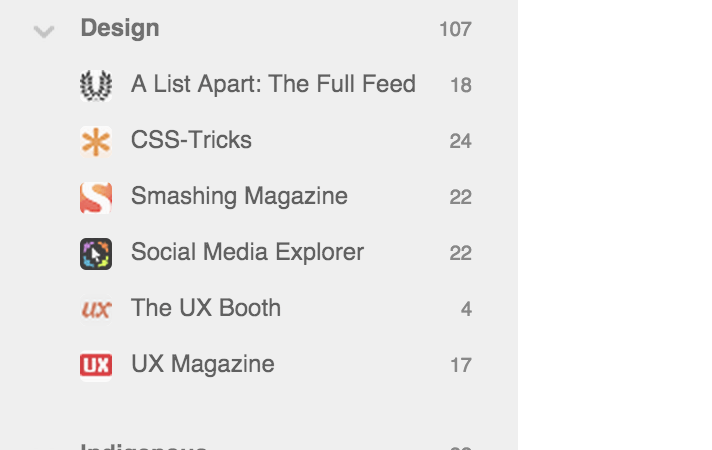Your blog is one of the most powerful tools you can use to build and engage with your audience. It positions you as a thought leader, shows that you are current and active in your industry and is also great for SEO. Yet coming up with regular blog ideas can sometimes feel overwhelming. What do you say? How do you come up with great content that will connect with your readers over and over again? If you don’t have a good process, sitting down to write can inspire anxiety and writer’s block, rather than ideas, which ends up leaving your blog untouched for months, gathering virtual dust. Not to worry, a good blog writing process is easy to make, you just need a few steps to help you get there. Here we go over some tried and tested tips to generate great blog content and for keeping inspired and organised.
1. Other Blogs in Your Industry
One of the best ways to come up with relevant blog ideas is to stay on top of what others out in your industry are writing. Bookmark and subscribe to the most influential blogs. Pay attention to what they’re posting and when. Use their blog articles as a way to inspire your blog ideas. It’s okay if you’re writing something similar, just make sure you come from an new angle or add something unique to the article. Also keep an eye on the comments section as you can mine some of the responses for potential topics for your posts.
2. Social Media
Social media aggregates thousands/millions of ideas globally around every kind of topic imaginable. Searching hashtags and trending topics will quickly show you what’s relevant. Twitter is particularly useful for this. We use the search tool at the top of our Twitter profile and also group our followers into lists to keep an eye on what’s happening in our industry as a way to help us guide our blog article topics. 
3. Use Online Tools to Generate Ideas
Don’t reinvent the wheel, take advantage of the clever tools that already exist to help you find out what’s trending quickly. We use the tools below to help us research a topic, look for interesting article headings and dive deeper into what people are really interested in reading. Feedly: A free tool which lets you search for particular topics and then set up feeds based on this. This is a great tool for staying on top of the most influential blogs in one area around specific topics. We use it to keep abreast of some large web design and development industry blogs so we can stay on top of best practice, latest industry trends and research for our projects. But it also helps us keep an eye on the types of topics that are being posted so we can inform our readers about this. Need to view the feeds on your mobile device? There’s an app for that.  Hubspot Topic Generator: A new tool by one of the largest leaders in inbound marketing, it can help generate interesting titles for your blog topics by mashing together nouns. It’s sometime useful if you get the combination right, the algorithm it uses is quite predictable after a while so you shouldn’t use it all the time, but it’s fun and a great way to get inspiration.
Hubspot Topic Generator: A new tool by one of the largest leaders in inbound marketing, it can help generate interesting titles for your blog topics by mashing together nouns. It’s sometime useful if you get the combination right, the algorithm it uses is quite predictable after a while so you shouldn’t use it all the time, but it’s fun and a great way to get inspiration.  Quora: You can find literally hundreds of questions on any given topic on Quora. It’s free to join and it’s easy to group all the topics your following through feeds. Quora also has a great search algorithm so the results you’ll find can sometimes surprise you, which is great for keeping things interesting.
Quora: You can find literally hundreds of questions on any given topic on Quora. It’s free to join and it’s easy to group all the topics your following through feeds. Quora also has a great search algorithm so the results you’ll find can sometimes surprise you, which is great for keeping things interesting.
4. Ask Your Audience
Why not go straight to the source and ask your readers what they would like to read about? Use a Facebook post, Google Hangout, or email them to ask what kind of questions they might have for you?
5. Say what other’s won’t
Is there a topic or an issue in your industry that’s only seeing one side of the story? Use your blog as a way to illuminate issues that aren’t being openly discussed. It’s okay to be controversial as long as it’s grounded in research and you are prepared for potentially some (hopefully not too much) backlash. It’s also a great way to get exposure and to demonstrate your thought leadership.
Stay organised and write often
The other key to successfully coming up with regular blog ideas is to stay organised with your seemingly random notes and to write often.
- Use Evernote to store blog post ideas, clip notes, other articles and keep it all in one place. Then you won’t lose that gold nugget of a idea you come up with while you’re on the run or in the early hours of the morning.
- Dedicate a small amount of regular time to write. Write a small amount and write often. Even 30 minutes of completely uninterrupted time everyday can make an enormous difference to how much writing you can get done. That’s 2.5 hours a week! In this busy world, putting away small chunks of time is far more manageable than large amounts of time.
Image courtesy of Mike Linksvayer from Flickr Creative Commons
